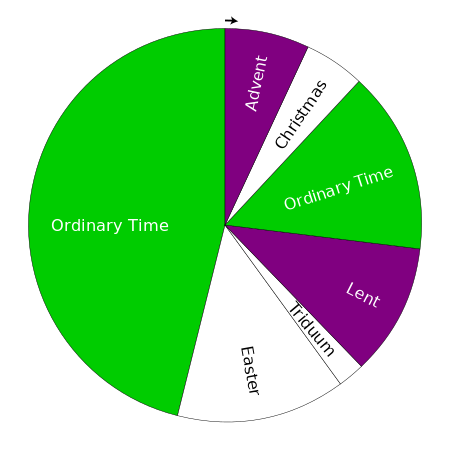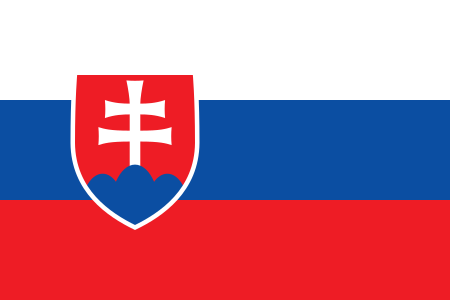Yakshini
| |||||||||||
Read other articles:

Questa voce sull'argomento cestisti statunitensi è solo un abbozzo. Contribuisci a migliorarla secondo le convenzioni di Wikipedia. Segui i suggerimenti del progetto di riferimento. Kenny Frease Nazionalità Stati Uniti Altezza 213 cm Peso 128 kg Pallacanestro Ruolo Centro Termine carriera 2019 CarrieraGiovanili Perry High School2008-2012 Xavier MusketeersSquadre di club 2012-2013 Tigers Tubinga34 (375)2013-2014 Artland Dragons32 (226)2014-2015 Yeşilgiresun16 (22…

ХристианствоБиблия Ветхий Завет Новый Завет Евангелие Десять заповедей Нагорная проповедь Апокрифы Бог, Троица Бог Отец Иисус Христос Святой Дух История христианства Апостолы Хронология христианства Раннее христианство Гностическое христианство Вселенские соборы Ни�…

Iranian politician Jafar Sharif-Emami33th Prime Minister of IranIn office27 August 1978 – 6 November 1978MonarchMohammad Reza PahlaviPreceded byJamshid AmouzegarSucceeded byGholam Reza AzhariIn office31 August 1960 – 5 May 1961MonarchMohammad Reza PahlaviPreceded byManouchehr EghbalSucceeded byAli AminiPresident of the SenateIn office11 September 1964 – 24 March 1978MonarchMohammad Reza PahlaviPreceded byMohsen SadrSucceeded byMohammad SajadiMinister of Forei…

Football stadium in Kerala, India Malappuram District Sports Complex Stadium, Payyanadമലപ്പുറം ജില്ലാസ്പോർട്സ് കോംപ്ലക്ല്, പയ്യനാട്MDSC Stadium, MalappuramPayyanad StadiumLocationPayyanad, Manjeri, Malappuram, KeralaOwnerGovernment of KeralaOperatorGovernment of KeralaCapacity29,188 (to be expanded to 44,500)[1]SurfaceGrassConstructionOpened2013Construction cost$12 millionTenantsKerala United FC (2021–pre…

Hijau adalah warna liturgi pada Masa Biasa Masa Biasa (bahasa Latin: Tempus per annum) adalah bagian dari tahun liturgi dalam liturgi Ritus Barat Gereja Katolik, sebagaimana direvisi pada tahun 1969, yang jatuh di luar dua musim raya Masa Natal dan Paskah, atau musim persiapan masing-masing Adven dan Prapaskah.[1] Referensi ^ Universal Norms on the Liturgical Year and the Calendar, 43 lbsTahun liturgi dalam Gereja KatolikBentuk Biasa Ritus Romawi dalam Gereja Latin (Kalender 1969)Adv…

Piala FA 1908–1909Negara Inggris WalesJuara bertahanWolverhampton WanderersJuaraManchester United(gelar ke-1)Tempat keduaBristol City← 1907–1908 1909–1910 → Piala FA 1908–1909 adalah edisi ke-38 dari penyelenggaraan Piala FA, turnamen tertua dalam sepak bola di Inggris. Edisi ini dimenangkan oleh Manchester United setelah mengalahkan Bristol City pada pertandingan final dengan skor 1–0. Final Artikel utama: Final Piala FA 1909 Manchester United v Bristol City 24 April 190…

History of the anarchist movement in Romania Part of a series onAnarchism History Outline Schools of thought Feminist Green Primitivist Social ecology Total liberation Individualist Egoist Free-market Naturist Philosophical Mutualism Postcolonial African Black Queer Religious Christian Jewish Social Collectivist Parecon Communist Magonism Without adjectives Methodology Agorism Illegalism Insurrectionary Communization Expropriative Pacifist Platformism Especifismo Relationship Syndicalist Synthes…

American Engineering Firm Fluor CorporationFluor LogoCompany typePublicTraded asNYSE: FLRS&P 400 componentIndustryEngineering and constructionFounded1912; 112 years ago (1912)Santa Ana, CaliforniaFounderJohn Simon FluorHeadquartersIrving, Texas, United StatesKey peopleDavid E. Constable (CEO)Revenue US$15.5 billion (2023)[1]Net income US$+139 million (2023)[1]Total assets7,309,812,000 United States dollar (2020) Number of employees40,582 (2022)[…

دوري السوبر السلوفاكي 2009–10 تفاصيل الموسم دوري السوبر السلوفاكي النسخة 17 البلد سلوفاكيا المنظم اتحاد سلوفاكيا لكرة القدم البطل نادي جيلينا مباريات ملعوبة 198 عدد المشاركين 12 دوري السوبر السلوفاكي 2008–09 دوري السوبر السلوفاكي 2010–11 تعديل مصدري - �…

Salafi jihadist militant group (2004–2006) Al-Qaeda in Iraq(Organization of Jihad's Base in the land of two rivers)القاعدة في العراقOne of several flags used by AQI in their video releases; others used white text for the circle and the shahada.LeadersAbu Musab al-Zarqawi † (17 October 2004 – 7 June 2006)Abu Ayyub al-Masri † (7 June 2006 – 15 October 2006)Omar Husayn Hadid al-Muhammadi † (November 2004)Dates of operation17 October 2004[1&#…

Deity of tibetan buddhism This article contains too many or overly lengthy quotations. Please help summarize the quotations. Consider transferring direct quotations to Wikiquote or excerpts to Wikisource. (November 2023) Statue of Dorje Shugden Part of a series onTibetan Buddhism Schools Nyingma Kadam Sakya Bodong Kagyu Jonang Gelug Rimé Key personalities First dissemination Padmasambhāva Śāntarakṣita Kamalaśīla Songtsen Gampo Trisong Detsen Ralpacan Second dissemination Atiśa Talika Ab…

الشيخ أحمد بن يحيى الكرمي أحمد بن يحيى الكرمي، و(بالإنجليزية: Ahmad ibn Yahya al-Karmi) معلومات شخصية اسم الولادة أحمد بن يحيى بن يوسف الكرمي الميلاد سنة 1591 طولكرم الوفاة 15 مارس 1680 (88–89 سنة) القاهرة سبب الوفاة شيخوخة مكان الدفن القاهرة الإقامة طولكرم …

Body shape similar to a human Ameca generation 1 pictured in the lab at Engineered Arts Ltd. A humanoid robot is a robot resembling the human body in shape. The design may be for functional purposes, such as interacting with human tools and environments, for experimental purposes, such as the study of bipedal locomotion, or for other purposes. In general, humanoid robots have a torso, a head, two arms, and two legs, though some humanoid robots may replicate only part of the body, for example, fr…

Highly-viscous oil that cannot easily flow to production wells under normal reservoir conditions Heavy crude oil (or extra heavy crude oil) is highly viscous oil that cannot easily flow from production wells under normal reservoir conditions.[1] It is referred to as heavy because its density or specific gravity is higher than that of light crude oil. Heavy crude oil has been defined as any liquid petroleum with an API gravity less than 20°.[2] Physical properties that differ bet…

International political forum of Middle-European states Three Seas Initiative Logo Membership Austria Bulgaria Croatia Czech Republic Estonia Greece Hungary Latvia Lithuania Poland Romania Slovakia SloveniaPartner-participant: Moldova UkraineEstablishment2015Area• Total1,218,975 km2 (470,649 sq mi)Population• Estimate 110,150,445[1]• Density90/km2 (233.1/sq mi)GDP (nominal)2022 estimate• Total €2.295 trillion[2]• …

American journalist Alfred FriendlyBorn(1911-12-30)December 30, 1911Salt Lake City, Utah, U.S.DiedNovember 7, 1983(1983-11-07) (aged 71)OccupationJournalistEducationAmherst CollegeEmployerThe Washington PostNotable awardsPulitzer Prize Alfred Friendly (December 30, 1911 – November 7, 1983) was an American journalist, editor and writer for The Washington Post. He began his career as a reporter with the Post in 1939 and became Managing Editor in 1955. In 1967 he covered the Mideast War for …

Esempio di dinamica atmosferico-climatica a livello globale (copertura nuvolosa) (NASA) Il clima (dal greco antico κλίμα?, klíma, regione, tratto di paese) è lo stato medio del tempo atmosferico a varie scale spaziali (locale, regionale, nazionale, continentale, emisferico o globale) rilevato nell'arco di almeno 30 anni (secondo la definizione ufficiale fornita dalla Organizzazione meteorologica mondiale). È in massima parte una funzione dell'inclinazione dei raggi solari sulla superfici…

Canadian provincial election 1912 Saskatchewan general election ← 1908 July 11, 1912 (1912-07-11) 1917 → ← outgoing membersmembers →54 seats in the Legislative Assembly of Saskatchewan28 seats needed for a majority First party Second party CON Leader Thomas Walter Scott Wellington Willoughby Party Liberal Conservative Leader since August 16, 1905 1912 Leader's seat Swift Current Moose Jaw City Last election 2…

1996 Japanese filmRemembering the Cosmos FlowerDirected byYōichi HigashiWritten byTakehiro NakajimaProduced byKoshiro ShoTetsujiro YamagamiStarringMieko HaradaKeigo MatsuyamaShogo MatsuyamaKyozo NagatsukaCinematographyYoshio ShimizuRelease date July 13, 1996 (1996-07-13) Running time112 minutesCountryJapanLanguageJapanese Village of Dreams (絵の中のぼくの村, E no naka no boku no mura) is a 1996 Japanese drama film directed by Yōichi Higashi. It is the story of two Japane…

Adonan kuki dengan tongkat penggulung di atas meja. Tongkat penggulung atau tongkat penggilaas (bahasa Inggris: rolling pin) adalah alat penyiapan olahan pangan berbentuk tabung yang digunakan untuk membentuk dan meratakan adonan. Ada dua jenis tongkat penggilas yang umum. Yaitu tongkat berpegangan dan tidak perpegangan. Tongkat penggilas berpegangan terdiri dari badan tabung tebal dengan pegangan kecil di setiap ujungnya; tongkat penggilas tipe tanpa pegangan biasanya hanya berhpa tongkat t…











